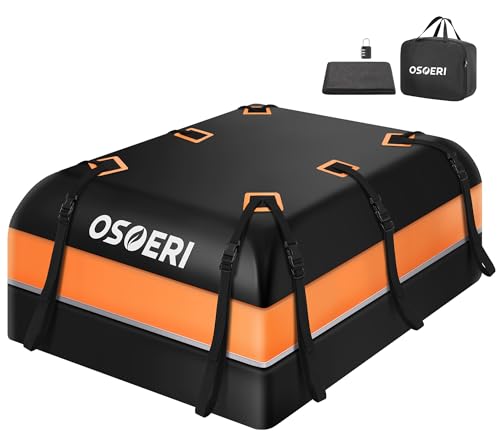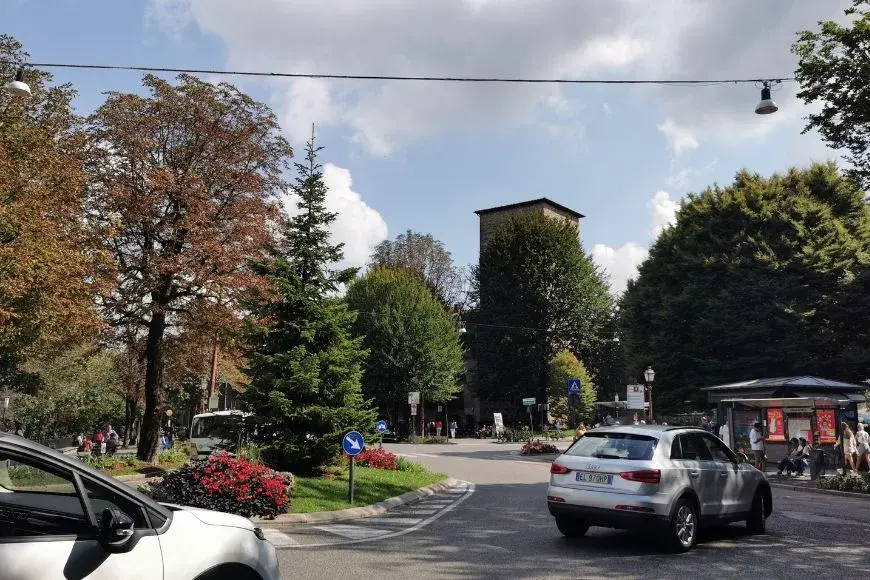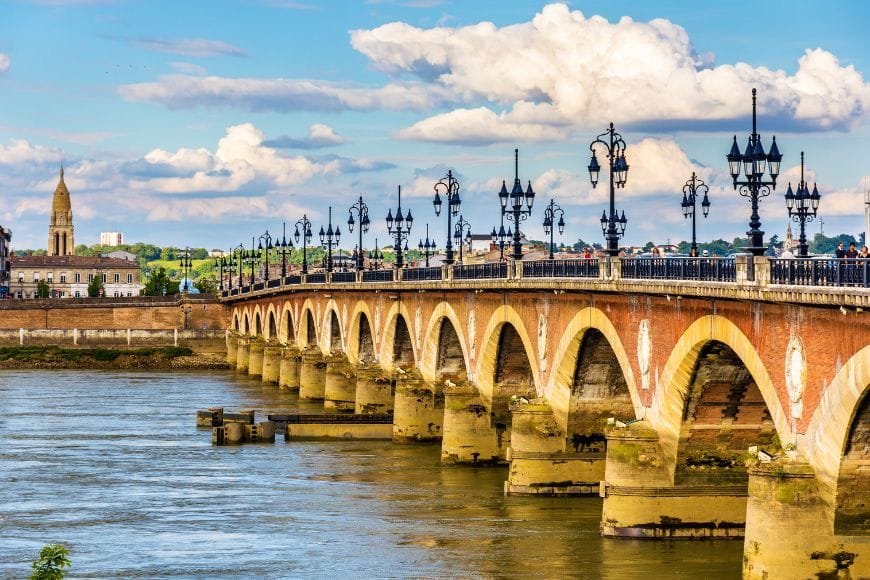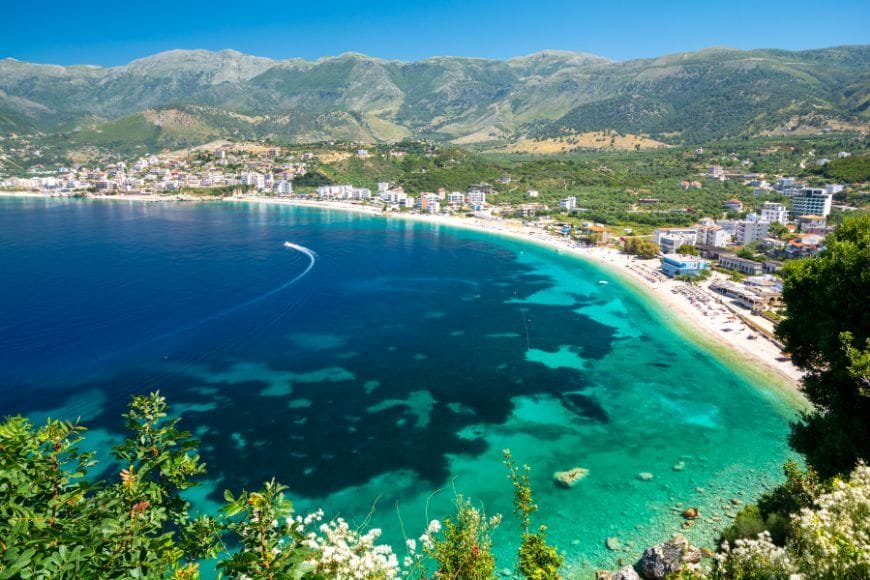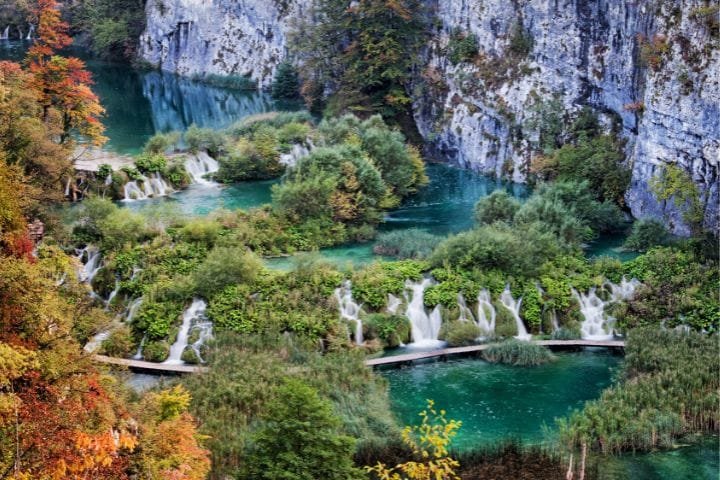Croatian Islands by Car Ferry: How to Plan It (2025 Guide)

by Abu | Last Updated December 4, 2025

Ready to transform your Croatian adventure by bringing your car along to explore some of Europe’s most pristine islands, where medieval towns perch on clifftops, lavender fields stretch to crystal-clear waters, and traditional fishing villages maintain centuries-old customs?
After countless island-hopping adventures throughout Croatia over the past eight years – from spontaneous weekend escapes to carefully planned multi-island expeditions – I can tell you that traveling by car ferry opens up authentic Croatian island experiences impossible to achieve any other way.
While many travelers limit themselves to walk-on ferry day trips, bringing your vehicle provides freedom to explore remote beaches accessible only by winding coastal roads, discover family-run wineries hidden in island interiors, and stay in traditional villages where you’ll wake up to church bells rather than tourist crowds.
Croatia’s extensive ferry network connects over 50 inhabited islands, creating opportunities for incredible multi-island road trips that combine transportation convenience with authentic island exploration.
Let me share essential knowledge from years of ferry adventures – how the system works, which routes provide the best combinations, securing peak season reservations, and insider tips that transform ferry logistics into seamless island exploration!
Understanding Croatia’s Car Ferry System

Ferry companies operate different routes and service levels, with Jadrolinija as the dominant carrier providing most car ferry connections between the mainland and major islands. This state-owned company operates large ferries with vehicle capacity, passenger amenities, and regular schedules that form the backbone of Croatian maritime transportation.
Krilo and other private operators focus primarily on faster passenger services, though some routes accommodate vehicles during peak season. Understanding which company serves your desired route prevents booking confusion and ensures appropriate vehicle reservations.
Car ferry versus passenger ferry differences significantly impact planning and costs. Car ferries accommodate vehicles with drivers plus additional passengers, while passenger ferries require leaving your vehicle on the mainland and relying on island transportation or walking.
Car ferries typically offer more amenities, including restaurants, shops, and comfortable seating areas, making longer journeys pleasant experiences rather than mere transportation. The ability to bring your vehicle transforms island visits from limited day trips into comprehensive exploration opportunities.
Booking systems require advance planning, especially during the summer months when popular routes sell out weeks or months ahead. Jadrolinija’s online system allows booking up to four months in advance, which becomes essential for July and August travel to destinations like Hvar or Korčula.
I learned this lesson the hard way during my second Croatian road trip when I assumed ferries operated like buses with frequent departures. Arriving at Split port without reservations in July resulted in three days of waiting for available space.
Ferry terminal locations vary from major ports like Split and Dubrovnik with extensive facilities to small town terminals that may be just marked areas near harbors. Understanding terminal locations and facilities helps with timing and logistics planning.
Costs and vehicle categories depend on car length, height, and seasonal pricing structures. Small cars (under 4 meters) cost significantly less than larger vehicles, while peak season rates can be 50-100% higher than off-season pricing.
Ferry system essentials:
- Jadrolinija dominates car ferry routes with state-operated service
- Advance booking essential during peak season (up to 4 months)
- Car ferries provide amenities and comfort for longer journeys
- Terminal facilities vary dramatically between major and minor ports
- Vehicle size significantly affects pricing and booking availability
🧭 Plan Your Croatia Coast & Island Adventure
Before boarding a ferry, make sure the rest of your route is dialed in — timing, tolls & border rules included.
- How to Plan a Balkan Road Trip in 2025: Routes, Tips & Must-See Stops — Everything you need before island-hopping by car.
- 10-Day Croatia Road Trip Itinerary 2025: Zagreb to Dubrovnik — The perfect coastal route with ferry options.
- Balkan Toll Roads Guide 2025 — Where toll roads begin/end before ferry ports.
Essential Ferry Planning and Booking Strategies

Online booking platforms have improved significantly but still require patience and persistence, especially for popular summer routes. Jadrolinija’s website allows English language navigation, though complex multi-island itineraries may require multiple separate bookings.
Peak season advance booking requirements can extend to four months for the most popular combinations like Split to Hvar or Dubrovnik to Korčula during July and August. These routes often sell out within hours of bookings opening.
My strategy involves booking popular summer routes immediately when reservations open, then building the rest of the itinerary around confirmed ferry connections rather than hoping for last-minute availability.
Alternative booking methods include travel agencies throughout Croatia that often have allocation holds for popular routes, though they typically charge service fees. Hotel concierges sometimes have connections for last-minute bookings.
Vehicle measurement guidelines require accurate length, width, and height measurements for proper category booking. Oversized vehicles may be rejected at boarding, while underestimating size can result in supplemental charges.
Roof boxes, bikes, and other external equipment count toward total dimensions. I always measure my loaded vehicle before booking to avoid complications during check-in procedures.
Group booking strategies for multiple vehicles or large families may qualify for discounts, though coordination becomes more complex. Some routes offer better group rates during off-peak periods.
Booking strategy recommendations:
- Book immediately when reservations open for summer travel
- Measure the loaded vehicle accurately, including all external equipment
- Consider travel agency booking for complex multi-island itineraries
- Have backup dates and alternative routes for flexibility
- Monitor booking websites for cancellation availability
Plan Your Trip with Our Favorite Booking Tools
Best Island Routes for Car Ferry Adventures

Northern islands, including Krk, Cres, and Lošinj, offer an excellent introduction to Croatian island car ferry travel with reliable service, good road infrastructure, and diverse experiences from traditional fishing villages to sophisticated resort towns.
Krk connects to the mainland via a bridge, eliminating ferry requirements, while Cres and Lošinj connect by ferry from Valbiska port with short journey times and frequent summer service.
Central Dalmatia combinations featuring Brač, Hvar, and Korčula create classic Croatian island experiences with medieval towns, wine regions, and spectacular beaches. Split serves as the primary mainland connection for these routes.
The Split-Hvar-Korčula combination requires careful timing because direct inter-island connections operate on limited schedules. Most travelers return to Split between islands, extending travel time but ensuring reliable connections.
Southern routes to Vis, Lastovo, and Mljet provide access to Croatia’s most pristine and least developed islands, where authentic traditional life continues largely unchanged by tourism pressures.
Vis Island, closed to tourism until 1989 due to military restrictions, preserves landscapes and culture that disappeared elsewhere. The ferry journey from Split takes 2.5 hours, creating a genuine sense of arrival at a remote destination.
Istrian peninsula connections link to Italian ferry services and provide access to sophisticated food and wine culture influenced by centuries of Italian rule. These routes work well for travelers combining Croatian islands with Italian road trips.
Multi-island itinerary coordination requires understanding that most inter-island connections operate seasonal schedules with limited frequency. Planning flexibility becomes essential when complex routing depends on multiple ferry connections.
Route planning recommendations:
- Northern islands are ideal for ferry introduction with reliable service
- Central Dalmatia offers classic Croatian island experiences
- Southern routes provide authentic traditional island culture
- Istrian connections work well for Italy combination trips
- Inter-island routes require flexible timing and backup plans
🌄 More Coastal & Scenic Adventures to Add
Explore more viewpoints & short trips before or after island hopping.
Major Island Destinations and Car Advantages

Hvar Island’s lavender routes and wine regions become accessible only with personal transportation that allows exploration of interior roads leading to traditional villages, family wineries, and lavender fields that create the scenery appearing in countless Croatian tourism promotions.
The drive from Hvar town to Stari Grad through lavender fields and traditional stone villages showcases authentic island life that tour buses cannot access. Having a car allows timing visits for optimal lavender blooming and harvest activities.
Korčula Island’s medieval towns and vineyard exploration require vehicle access for discovering traditional wine producers and remote beaches that remain largely unknown to day-trip visitors limited to the main town.
I discovered my favorite Croatian winery, Crno Vino, purely by following rural road signs while exploring Korčula’s interior. Their family operation produces exceptional wines using indigenous grapes, but reaching them requires navigating narrow country roads.
Brač Island, beyond Zlatni Rat, offers traditional stone masonry villages, ancient quarries, and remote beaches accessible only by car. The famous beach represents just one attraction on an island rich with cultural heritage and natural beauty.
Vis Island’s military heritage and pristine nature require vehicle access for exploring abandoned military installations, traditional fishing villages, and remote beaches that preserve authentic island character without tourism development.
The drive to Komiža village on Vis’s western coast passes through landscapes that appear unchanged for centuries, while vehicle access enables visiting traditional wine cellars carved into hillsides.
Cres and Lošinj’s natural diversity, from griffon vulture habitats to sophisticated resort towns, creates experiences ranging from wildlife observation to luxury accommodations, all accessible by scenic coastal roads.
Car access advantages for island exploration:
- Remote beaches and viewpoints inaccessible to tour groups
- Traditional wineries and family operations requiring rural road navigation
- Flexible timing for optimal experiences like lavender blooming
- Authentic village discoveries impossible with limited day-trip schedules
- Traditional restaurants and cultural sites away from the main tourist areas
Ferry Terminal Navigation and Logistics

Split ferry port serves as Croatia’s primary island gateway with multiple terminals handling different routes. The main port area can be confusing for first-time visitors, requiring advance research of specific terminal locations and parking arrangements.
Vehicle check-in typically opens 90 minutes before departure, though summer peak periods may require earlier arrival to manage boarding queues. The port area has limited parking, making early arrival essential for vehicle positioning.
Dubrovnik port connections serve southern islands with smaller terminals that provide more intimate experiences but limited facilities. Vehicle parking near terminals fills quickly during peak season, requiring strategic planning.
Zadar terminal operations connect to northern islands with efficient facilities and good mainland highway access. This port works particularly well for travelers combining island visits with northern Croatia exploration.
Rijeka port facilities handle northern Adriatic connections, including routes to Italian destinations. The industrial port environment contrasts with scenic coastal terminals but provides excellent highway connections.
Small town terminals throughout Croatia operate seasonal services to nearby islands with minimal facilities but an authentic local atmosphere. These connections often provide access to less touristy destinations.
Terminal parking varies dramatically from organized lots with attendants to informal areas where vehicles wait without oversight. Understanding parking security and time limits prevents problems during multi-day island stays.
Terminal navigation essentials:
- Research specific terminal locations and parking arrangements in advance
- Arrive 90+ minutes early during peak season for vehicle check-in
- Understand parking security and time limit policies
- Have backup parking plans for small terminals with limited space
- Confirm terminal locations, as some routes use different ports
Onboard Experience and Travel Tips

Vehicle loading procedures follow organized systems where cars queue by size and destination, with loading directed by port staff. Following instructions and maintaining patience during busy periods ensures smooth boarding experiences.
Passengers typically disembark vehicles once loaded and spend journey time in passenger areas with seating, restaurants, and observation decks. Vehicle access during sailing is generally prohibited for safety reasons.
Passenger amenities vary by ferry size and route, with larger vessels offering restaurants, shops, WiFi, and comfortable seating areas that make longer journeys pleasant experiences. Shorter routes may have minimal amenities.
I always pack snacks and entertainment for ferry journeys, especially with children, as onboard food service can be expensive and limited. Many ferries allow passengers to bring their own food and beverages.
Journey times range from 20 minutes for short connections to over 3 hours for distant islands like Vis or Lastovo. Understanding journey duration helps with planning activities and meal timing.
Vehicle security during sailing relies on locked vehicles and general ferry security, though valuable items should be removed before parking. Insurance policies may have specific requirements for ferry transport coverage.
Weather delays and cancellations occur regularly during the winter months and occasionally during summer storms. Having flexible schedules and backup accommodation prevents problems during weather-related disruptions.
Onboard experience optimization:
- Remove valuables from the vehicle before boarding
- Pack entertainment and snacks for longer journeys
- Understand passenger area locations and amenities available
- Plan activities for the journey duration and weather conditions
- Have flexible timing for weather-related delays
Island Driving Considerations and Road Conditions

Narrow coastal roads on many Croatian islands require confident driving skills and patience for passing oncoming traffic. Stone walls and steep drops leave little margin for error on traditional routes.
Island roads often follow centuries-old paths that wind through traditional villages and along clifftops with spectacular views but challenging driving conditions. Speed limits are lower than mainland highways for good reason.
Parking challenges in medieval town centers require advanced research and realistic expectations. Many historic areas restrict vehicle access, requiring parking outside walls and walking to accommodations and attractions.
Korčula’s old town completely prohibits vehicle access, while Hvar town has extremely limited parking that fills early during peak season. Planning accommodation with parking or researching public parking locations prevents arrival complications.
Fuel availability on islands varies dramatically, with larger islands like Hvar and Korčula maintaining multiple stations, while smaller islands may have limited or seasonal service. Keeping tanks fuller than mainland travel becomes essential.
Speed limits and traffic regulations on islands typically restrict speeds more than on mainland roads due to narrow conditions and pedestrian traffic in villages. Police enforcement focuses on safety rather than revenue generation.
Emergency services and breakdown assistance exist on major islands, but response times may be extended compared to mainland service. Comprehensive car insurance with island coverage provides essential protection.
Island driving essentials:
- Confident skills are required for narrow roads with stone walls
- Research parking availability and restrictions in historic towns
- Maintain fuller fuel tanks due to limited station availability
- Respect lower speed limits designed for narrow road conditions
- Comprehensive insurance coverage is essential for island breakdown protection
Seasonal Timing and Weather Considerations

Summer peak season from July through August offers the warmest weather and all services operating, but brings maximum crowds, premium pricing, and advance booking requirements extending months ahead of travel dates.
Ferry frequencies reach peak levels during summer with multiple daily departures on popular routes, but vehicle space remains limited and expensive. Popular island accommodations may be completely booked during peak weeks.
Spring and autumn advantages include comfortable temperatures, reduced crowds, better value pricing, and easier ferry booking while maintaining generally good weather for outdoor activities and sightseeing.
I prefer late May and early October for Croatian island travel – weather remains excellent for swimming and outdoor activities, while ferry booking stress and accommodation costs decrease significantly.
Winter service limitations include reduced ferry schedules, closed accommodations, and limited restaurant options on smaller islands. Some routes operate only sporadically during the winter months.
Weather-related cancellations occur most frequently during winter Bura wind storms, but can affect summer travel during severe weather. Having flexible itineraries and backup plans prevents complete trip disruption.
Optimal timing for specific experiences varies by activity – lavender blooming peaks in June-July, wine harvest occurs in September-October, while swimming conditions remain excellent through October.
Seasonal planning recommendations:
- Summer offers the best weather but requires advance planning and premium costs
- Shoulder seasons provide an optimal balance of weather, costs, and availability
- Winter travel requires flexible planning due to service limitations
- Consider specific activity timing, like lavender blooming or wine harvest
- Always have backup plans for weather-related schedule disruptions
Budget Planning and Cost Management

Ferry ticket pricing structures vary by vehicle size, passenger count, and seasonal demand, with peak summer rates significantly higher than off-season pricing. Small cars (under 4 meters) receive substantial discounts compared to larger vehicles.
Round-trip bookings sometimes offer modest savings, though one-way tickets provide flexibility for complex multi-island itineraries. Group discounts may apply for multiple vehicles or large families.
Accommodation costs on islands typically exceed mainland pricing due to limited supply and transportation costs. Peak season rates can be 100-200% higher than shoulder season pricing.
Island accommodation often requires minimum stay requirements during peak season, while off-season may see many properties closed entirely. Booking strategies must account for these seasonal variations.
Fuel costs and daily expenses on islands generally cost more than on the mainland due to transportation logistics. Restaurant pricing varies dramatically between tourist areas and authentic local establishments.
Money-saving strategies include shoulder season travel, advance booking for better rates, choosing accommodations with kitchen facilities, and seeking authentic local restaurants away from main tourist areas.
My budget approach involves allocating 30-40% more for island expenses compared to equivalent mainland travel, with summer requiring even higher budgets due to seasonal pricing premiums.
Hidden costs include parking fees at ferry terminals, supplemental charges for oversized vehicles, and premium pricing for accommodations with parking facilities.
Plan Your Trip with Our Favorite Booking Tools
Budget planning essentials:
- Ferry costs vary dramatically by vehicle size and season
- Island accommodation requires 30-40% budget premium over mainland
- Peak season pricing can double accommodation and dining costs
- Factor parking fees, fuel premiums, and hidden charges into budgets
- Shoulder season travel provides the best value without sacrificing experience quality
Alternative Transportation and Hybrid Strategies
Combining car ferries with walk-on services allows strategic vehicle use for specific islands while using faster passenger ferries for day trips or shorter visits. This hybrid approach optimizes time and costs.
Mainland base camps in cities like Split or Dubrovnik provide accommodation value while enabling day ferry excursions to nearby islands without vehicle transport costs and logistics.
Split offers excellent ferry connections to multiple islands within day-trip range, while providing mainland accommodation prices and urban amenities that enhance overall travel experiences.
Inter-island connections exist between some islands without returning to the mainland, though schedules are limited and seasonal. These connections work well for travelers with flexible timing.
Public transportation on major islands includes bus services connecting towns and beaches, though schedules may be limited and oriented toward local needs rather than tourist convenience.
Bicycle transport on ferries provides alternative exploration methods, with many islands offering excellent cycling opportunities on quiet roads with spectacular scenery and manageable distances.
Bringing bicycles on ferries costs significantly less than vehicles while providing sustainable transportation for island exploration and access to areas where cars are prohibited.
Alternative strategy benefits:
- Hybrid approaches optimize time and cost efficiency
- Mainland bases provide value while maintaining island access
- Inter-island connections enable complex routing without mainland returns
- Bicycle transport offers sustainable exploration with lower costs
- Public transportation supplements vehicle access on major islands
Your Croatian Island Ferry Adventure
Island hopping in Croatia by car ferry transforms ordinary vacation logistics into extraordinary adventures that provide authentic access to island cultures, hidden beaches, and traditional communities largely inaccessible to conventional tourism.
The freedom to explore at your own pace, discover remote locations, and stay in authentic island settings creates travel experiences that justify the additional planning and costs involved in ferry travel.
Success requires understanding ferry systems, advanced planning for peak seasons, and flexible timing that accommodates weather delays, but the payoff includes memories that capture the authentic essence of Croatian island culture.
Plan thoroughly, book early, and prepare for island adventures that showcase why Croatia’s archipelago ranks among the Mediterranean’s most spectacular destinations!
FAQs on Croatian Islands by Car Ferry
Can I take a rental car on a ferry to Croatian islands?
Yes, most rental cars can go on ferries, but always confirm with your rental company. Some may charge an extra fee or require prior notice.
Which Croatian islands can I reach by car ferry?
Popular islands accessible by car ferry include Brač, Hvar, Korčula, Cres, Pag, and Krk. Not all ferry routes allow vehicles, so check before booking.
Do I need to book car ferry tickets in advance?
During peak season (June–August), it’s highly recommended to book in advance, especially if you’re bringing a car. In the off-season, buying tickets at the port is usually fine.
How much does it cost to bring a car on a Croatian ferry?
Prices vary depending on the island and ferry line, but you’ll typically pay for both the vehicle and each passenger separately. Expect higher rates in summer.
Which ferry companies operate car ferries in Croatia?
The main operator is Jadrolinija, with additional lines like Krilo and TP Line offering some routes (though not all allow cars).
Are there multiple daily departures for car ferries?
Yes, on busy routes (like Split to Brač or Dubrovnik to Korčula), there are usually multiple daily sailings, especially in summer. Remote islands may have just one or two per day.
Is it easy to drive on Croatian islands?
Generally yes, but roads can be narrow and winding on some islands. Drive slowly, especially near villages and along coastal cliffs.
🛣️ Driving + Border Considerations for Island Trips
Helpful if you’re planning to combine Croatia with other Balkan countries.
- Balkan Road Trip Border Crossings: Complete 2025 Guide — Especially if connecting to Montenegro or Bosnia.
- Essential Balkan Driving Safety Tips 2025 — Mountain drives + narrow coastal roads — stay safe.
💬 We’d love to hear from you!
Have questions, tips, or personal travel stories to share? Drop them in the comments below — your insights help fellow travelers plan their adventures too.



